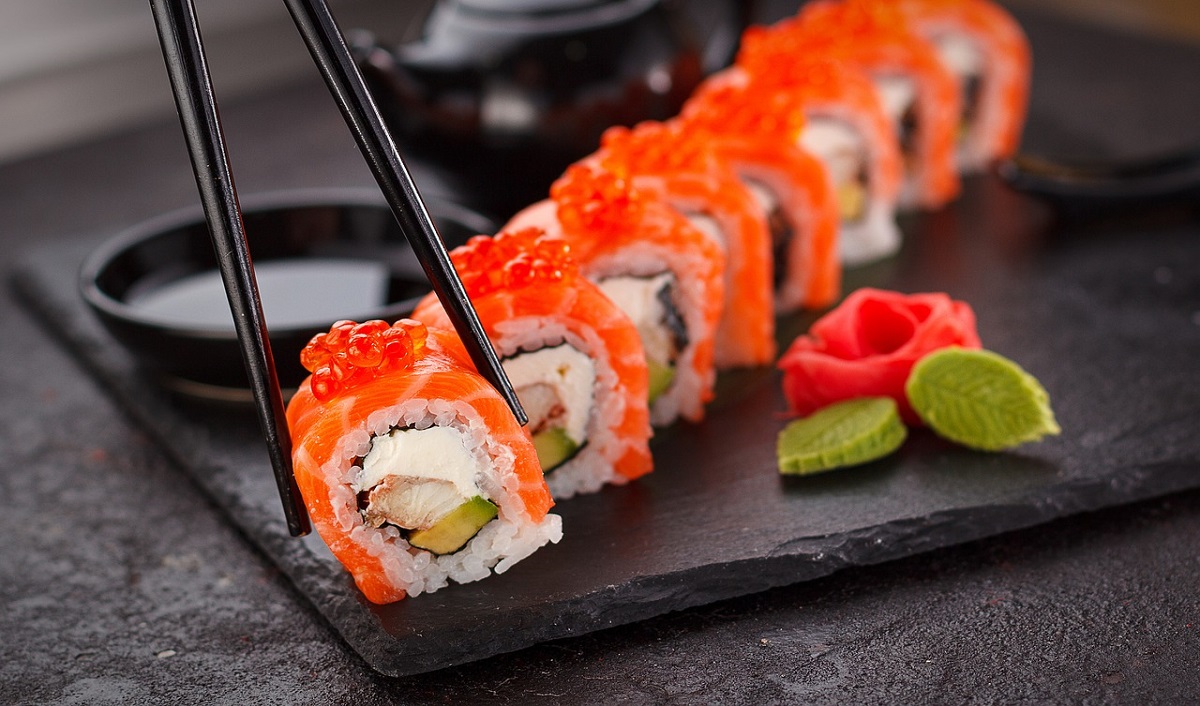
Sushi, the Japanese delicacy, has its loyal following. The carefully curated and cooked vinegared rice roll with fish or seafood or raw vegetables has quite a fan base in India, especially Delhi, and a recent survey by Swiggy, an online food delivery platform reaffirms it.
Going by the data, there has been an increase in orders of Sushi by nearly 50 per cent since January 2019. Demands have also been recorded from smaller cities like Guwahati and Ludhiana. The survey also reveals that the top 10 fan favourite Sushi dishes are Dynamite Sushi, Asparagus Tempura Sushi, Crispy Chicken Sushi, Ebi Tempura Sushi to name a afew.
The humble beginning
Sushi has a long history of evolution which dates back to ancient China. The concept of preservation of fish gave birth to the initial format of sushi. In order to keep fish fresh, it was allowed to ferment with rice and later before consumption, rice was discarded and fish was consumed. This method also made its way to Japan, where people started eating rice along with the fish and slowly with added modifications sushi was born.
It soon became very popular among the Japanese and they started innovating the dish with seasonings and vinegar to make it perfect for immediate consumption. Sushi emerged as a widely consumed fast food that is strongly associated with Japanese culture and tradition. Now, in modern times, Sushi has become a globally accepted and loved fast food which is consumed differently by various people across the globe. The evolution of sushi in the country is primarily a result of Indians travelling a lot more and hence being more adventurous with their palate.
Indianisation of Sushi
As the ingredients used like avocado, asparagus, salmon, tuna and so on are treated as good healthier options to fulfill the nutritional value of a human body, the pandemic has raised the bar of eating in guests or people who are food lovers and looks for the healthy options to eat. People want to try something new and relatable to their palate. Whereas for some people it is a sort of status symbol to go out and eat food with chopsticks just to show off.
While studying in the UK, Gaurav Kanwar, (founder of Harajuku Tokyo Cafe) tried sushi for the first time and was totally sold on the mind-boggling possibilities for an innovation this Japanese staple food has.
For years, sushi has been associated mainly with raw fish and was not so palatable or accessible to Indians, being mostly served in expensive five-star hotels. However, with the rise in popularity of modern Japanese cuisine, and the introduction of different ingredients in sushi, especially vegetarian ones, the interest in this Japanese dish amongst Indians has been quite phenomenal.
According to Kanwar, “Sushi has been one of the main menu items served at Harajuku and it has been heartwarming and interesting to see so many customers trying it for the first time at our cafe and loving it, including an older generation of people. We continuously innovate and develop new types of sushi with different ingredients and toppings keeping the Indian palate in mind.”
They have 15 types of Sushi on the menu.
Price war of Sushi in India
The consumption and preparation of sushi in India is very different as compared to the rest of the world, as a result of good quality sushi being associated with a high price dining experience. So does more demand means restaurants will be coming up with economical menu rates for Sushi?
Abhayraj Kohli, owner of Tori commented that Sushi all over the world is expensive and the three main reasons are quality of product, skill levels of the chef who requires years of training to get the product right and the fish that has to be stored at a temperature below -60 which make the equipment required to do this expensive to buy and run.
“Good quality sushi can never be cheap or cheaper. On the other hand, as sushi gets popular, Indians will start importing better quality tuna etc for their sushi better quality more expensive sushi will be available here soon,” he said.
The Japan External Trade Organisation reports there are about 100 restaurants in India that serve mainly Japanese cuisine, up from 60 last year. These include top names such as Sakura; Megu at The Leela Palace, New Delhi; Wasabi By Morimoto at The Taj Mahal Palace, Mumbai; and Edo at ITC Gardenia, Bengaluru, but the figure doesn't include smaller sushi bars, nor the many eateries that serve sushi as part of their wider menus. That number, one would imagine, would run into the thousands.
Copyright © 2009 - 2024 Restaurant India.







![Gurugram's Only Microbrewery at 32nd Milestone [Must-Visit]](https://restaurantindia.s3.ap-south-1.amazonaws.com/s3fs-public/content12654.jpg)

